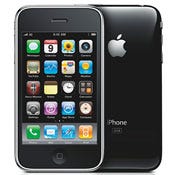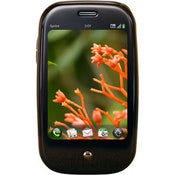Apple iPhone 3G S Dilemma: To Upgrade Or Not?Apple iPhone 3G S Dilemma: To Upgrade Or Not?
The iPhone 3G S has some sweet new features (faster processor, video, more memory) leaving existing iPhone customers with a tough decision: Upgrade now, or stand pat?


(click image for larger view)
Apple iPhone 3G S
Apple's iPhone 3G S, the latest generation of the iPhone, has several new and attractive features, but nothing revolutionary. And money's scarce for everyone. If you're an existing iPhone user, should you upgrade, or should you sit this one out?
It's a tough decision. When I have a tough decision, I like to make a list of pros and cons. So let's get a clean legal pad, sharpen our No. 2 pencils, and get to work.
Reasons To Upgrade
The iPhone 3G S is faster: The most compelling feature of the new iPhone is speed. The unit has a faster processor and speeds graphics through hardware support for OpenGL ES 2.0. Apple says the iPhone 3G S operates two to three times faster than the first- and second-generation iPhone hardware.
Web pages often load slowly on the iPhone 3G. Processor speed is to blame for that, rather than network performance. The 3G network is plenty fast enough to download pages in reasonable time; it's the browser that takes a while to figure out how to render those pages.
More memory: The two new models hold 16 GB ($199) and 32 GB ($299), compared with 8 GB and 16 GB for the existing iPhone 3G. And you'll need all that new memory for ...
The improved camera: The iPhone 3G camera supports video capture. All that video will eat up a lot of storage fast. The camera also supports 3-megapixel images, compared with 2-megapixels shots for the existing iPhone camera.
The onboard compass: The old iPhone 3G knows where you are, thanks to its onboard GPS. The new 3G S knows which direction you're facing, thanks to its onboard compass. The compass makes the onboard Google Maps application smarter; it now positions itself to match the same direction you're facing. We'll see a lot more interesting apps that take advantage of that compass.

(click image for larger view)
If you're unhappy with AT&T, move on. This is the Palm Pre.
Reasons To Sit Tight
iPhone 3.0 software: The iPhone 3.0 software will be available free to users of existing iPhones on June 17. You don't need to pay to get many of the best new iPhone features, including support for push notification, so Internet-connected applications such as instant messaging can notify you of updates even when those applications aren't running. iPhone 3.0 software also supports copy, cut, and paste, and user interface improvements including system-wide search of data and applications.
Feature delays: A couple of the more interesting features in the new iPhone are multimedia messaging service (MMS) and the ability to use your iPhone as a wireless modem for your laptop computer, which is called "tethering." Those features will be available all over the world when the iPhone ships -- except in the United States, because AT&T isn't ready for them yet.
AT&T says the services will be available this summer. But deadlines like this often slip. Don't buy products based on features that vendors promise to incorporate in the future, because often vendors don't deliver on those promises. If you're an American, and MMS and tethering are important to you, wait until they're available in the United States.
Upgrade penalties: The iPhone 3G S isn't a good deal for iPhone 3G customers. The $199 and $299 pricing only applies to new customers, or people who bought their iPhone a long time ago. The most loyal customers, ones who rushed out to buy the iPhone 3G when it first became available last summer, will pay a $200 penalty for upgrading early, plus (insult to injury) an $18 fee. Apple and AT&T haven't clarified criteria for the $218 surcharge; I bought my iPhone 3G when it first went on sale, 11 months ago, and Apple tells me I may be eligible for an upgrade in December. Maybe. They won't make a commitment.
So if you're an iPhone 3G user, you'll probably just want to hold off and wait until this situation sorts itself out. Apple and AT&T are taking a lot of criticism; my gut feeling is that we may see Apple and AT&T eliminate or significantly reduce the upgrade penalty. So you're better off postponing an upgrade until you're eligible for a discount.
Or maybe hold off on this generation of iPhone entirely, and see what Apple has in the pipeline for 2010. Customer dissatisfaction AT&T coverage is spotty in many places, including San Francisco and New York, and virtually nonexistent in New Mexico. If you're unhappy with AT&T as a network provider, just dump it move on. Buy yourself an iPod Touch if you need the Apple magic, and get a phone from some other carrier.
Moreover, you may be able to get the best of both worlds -- iPhone with a non-AT&T carrier. Apple's exclusive contract with AT&T runs out soon, and it's likely to negotiate deals with other U.S. vendors.
Our Recommendations
Upgrade if you're using a first-generation iPhone and have good connectivity. You'll get faster performance. Not only is the processor faster, but the network is faster too. The first-generation iPhone ran on the slower EDGE network; 3G support came last year, but isn't available on first-generation iPhones.
Postpone upgrading if you're using an iPhone 3G. $500 is a lot of money to spend for a new phone, and the $300, 16-GB model isn't worth buying; you want a lot of memory to take advantage of that video camera. Wait for a better deal.
And if you're dissatisfied with AT&T service, don't upgrade until and unless the iPhone becomes available with another carrier.
As for me: I'm one of those iPhone 3G users, so I'm holding off for a better deal than the ones now available.
information has published an in-depth report on smartphone security. Download the report here (registration required).
Read more about:
2009About the Author
You May Also Like






